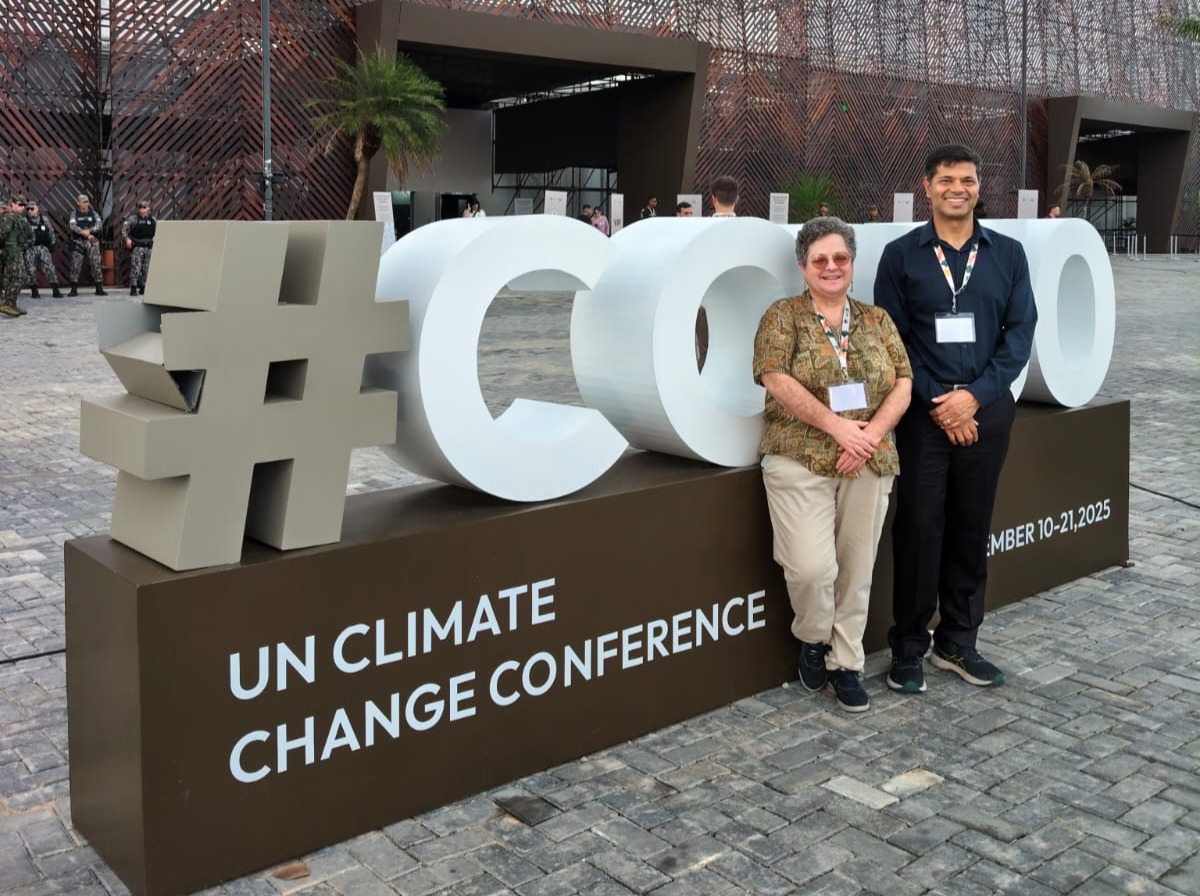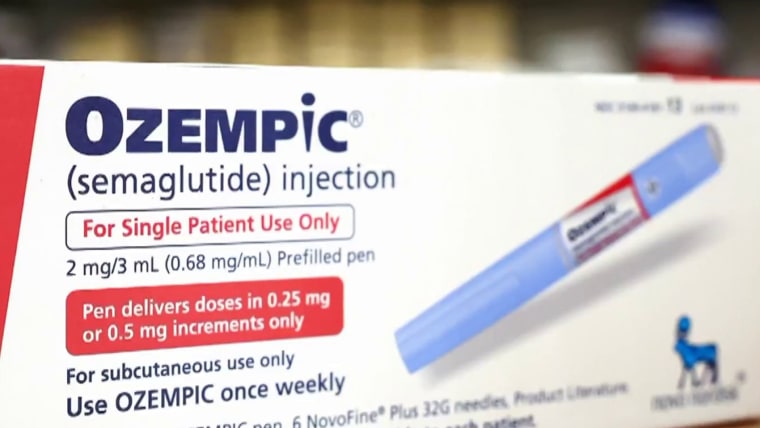Why Food and Agriculture Should Be at the Centre of COP30 Agenda – Global Issues.org

Report on the Integration of Agrifood Systems into Climate Negotiations for Sustainable Development Goal Attainment
Context: COP30 and the Imperative for Sustainable Agrifood Systems
As the COP30 climate conference progresses, there is an urgent call from farmers, activists, and scientists to integrate food and agriculture into the core agenda. This integration is critical for addressing the dual challenges of climate change and global food security, directly impacting the achievement of the Sustainable Development Goals (SDGs), particularly SDG 2 (Zero Hunger) and SDG 13 (Climate Action).
Field Evidence from Zimbabwe: Aligning with SDG 2, SDG 13, and SDG 5
Case studies from Zimbabwe demonstrate the efficacy of sustainable farming practices in building resilience and ensuring food security, highlighting the crucial role of women in agriculture (SDG 5).
- Conservation Farming (Intwasa/Pfumvudza): Farmer Agnes Moyo successfully harvested pearl millet during a severe drought by employing conservation farming techniques. This method enhances climate adaptation and supports SDG 2 by ensuring household food availability.
- Agroecology: Farmer Elizabeth Mpofu utilizes agroecological methods on her 10-hectare farm to grow diverse, drought-tolerant crops. This approach promotes soil fertility and water conservation, aligning with SDG 12 (Responsible Consumption and Production) and SDG 15 (Life on Land), while strengthening food sovereignty in line with SDG 2. Her advocacy for the UN Declaration on the Rights of Peasants also supports SDG 10 (Reduced Inequalities).
Global Agrifood Systems and Climate Impact: Challenges to SDG Attainment
Current agrifood systems present significant obstacles to achieving global climate targets and sustainable development.
- Greenhouse Gas Emissions: The UN Food and Agriculture Organization (FAO) reports that agrifood systems are responsible for one-third of all greenhouse gas emissions, directly undermining progress on SDG 13.
- Economic Losses from Disasters: Climate-related disasters have caused hundreds of billions of dollars in agricultural losses, equivalent to 5% of global agricultural GDP over three decades. This severely impacts efforts towards SDG 1 (No Poverty) and SDG 2.
- Inclusion in Climate Pledges: While 94% of countries mention agriculture for adaptation and 91% for mitigation in their Nationally Determined Contributions (NDCs), implementation remains a critical challenge for realizing the goals of the Paris Agreement and SDG 13.
The Fossil Fuel Dependency in Agriculture: A Barrier to SDG 7 and SDG 12
The deep integration of fossil fuels in the global food system is a primary barrier to sustainable production and consumption patterns.
- High Consumption Rates: According to the International Panel of Experts on Sustainable Food Systems (IPES-Food), food systems consume 15% of all fossil fuels globally. This dependency is contrary to the principles of SDG 7 (Affordable and Clean Energy) and SDG 12.
- Political and Economic Barriers: The slow adoption of fossil-fuel-free alternatives like agroecology is attributed to powerful agribusiness and fossil fuel lobbies, as well as vast subsidies (USD 7 trillion annually) that protect the industrial model over sustainable practices.
- Call for a Just Transition: Experts advocate for delinking food systems from fossil fuels by phasing out subsidies and reinvesting in agroecology. This requires a just transition that includes agriculture in policy discussions to ensure fairness and support for small-scale farmers, aligning with SDG 10.
International Commitments and the Path Forward
Recent international declarations signal a growing political will to connect climate action with food security and poverty alleviation.
The Belém Declaration
Signed by 43 countries and the European Union, this declaration represents a significant commitment to an integrated approach to sustainable development. Its key pledges include:
- Placing SDG 1 (No Poverty) and SDG 2 (Zero Hunger) at the center of climate action under SDG 13.
- Addressing the specific needs of small-scale farmers, fishers, pastoralists, and Indigenous peoples, who are disproportionately affected by climate change yet are stewards of sustainable systems.
The implementation of this declaration is viewed as a critical test of political courage at COP30. Success would model a global formula for simultaneously tackling hunger, inequality, and climate change, thereby advancing a comprehensive SDG agenda.
Analysis of Sustainable Development Goals in the Article
1. Which SDGs are addressed or connected to the issues highlighted in the article?
-
SDG 2: Zero Hunger
- The article’s core focus is on food security, sustainable agriculture, and the challenges faced by small-scale farmers like Agnes Moyo and Elizabeth Mpofu in Zimbabwe. It discusses methods like conservation farming and agroecology to ensure food production even during severe droughts, directly addressing the goal of ending hunger and promoting sustainable agriculture.
-
SDG 13: Climate Action
- The entire article is framed within the context of the COP30 climate negotiations. It explicitly discusses the impacts of climate change on agriculture (droughts, flooding), the contribution of agrifood systems to greenhouse gas emissions (“one-third”), and the need to integrate agriculture into climate solutions to limit global warming to 1.5°C.
-
SDG 1: No Poverty
- The article connects climate action with poverty alleviation, citing the Belém Declaration’s pledge to place “hunger and poverty alleviation at the center of climate action.” It highlights the vulnerability of small-scale farmers and implies that sustainable farming practices can improve their livelihoods and resilience, thereby addressing poverty.
-
SDG 7: Affordable and Clean Energy
- A significant portion of the article critiques the food system’s heavy dependence on fossil fuels, noting that it consumes “15 percent of all fossil fuels.” It calls for delinking food systems from fossil fuels, phasing out subsidies, and transitioning to clean energy, which aligns directly with promoting clean energy.
-
SDG 12: Responsible Consumption and Production
- The article advocates for transforming agrifood systems through sustainable production methods like agroecology, which promotes soil fertility and water conservation. It also mentions the need for “waste elimination,” aligning with the goal of achieving sustainable management and efficient use of natural resources.
-
SDG 5: Gender Equality
- The article prominently features two female farmers, Agnes Moyo and Elizabeth Mpofu, showcasing their leadership and success in implementing sustainable agricultural practices. This highlights the crucial role of women in food production and climate resilience, connecting to the empowerment of women in rural areas.
-
SDG 17: Partnerships for the Goals
- The article describes a multi-stakeholder effort involving governments (at COP30), civil society organizations (Via Campesina, Food Tank, ActionAid), scientists, and philanthropy. The mention of international agreements like the Paris Agreement and the Belém Declaration underscores the importance of global partnerships to achieve climate and food security goals.
2. What specific targets under those SDGs can be identified based on the article’s content?
-
Under SDG 2 (Zero Hunger):
- Target 2.3: By 2030, double the agricultural productivity and incomes of small-scale food producers, in particular women… The article directly supports this by showcasing how Agnes Moyo’s use of conservation farming helped her harvest ten bags of millet during a drought, securing her family’s food and providing a model for other small-scale farmers.
- Target 2.4: By 2030, ensure sustainable food production systems and implement resilient agricultural practices that increase productivity and production, that help maintain ecosystems… The promotion of agroecology and conservation farming (Intwasa/Pfumvudza) as methods that “promote soil fertility, conserve water,” and are resilient to drought directly relates to this target.
-
Under SDG 13 (Climate Action):
- Target 13.1: Strengthen resilience and adaptive capacity to climate-related hazards and natural disasters in all countries. The examples of farmers using drought-tolerant crops and conservation techniques to thrive despite “severe drought” are clear examples of building resilience and adaptive capacity.
- Target 13.2: Integrate climate change measures into national policies, strategies and planning. The article mentions that “Almost all countries have included agriculture in their Nationally Determined Contributions (NDCs),” with 94% mentioning it for adaptation and 91% for mitigation, showing this integration in practice.
-
Under SDG 1 (No Poverty):
- Target 1.5: By 2030, build the resilience of the poor and those in vulnerable situations and reduce their exposure and vulnerability to climate-related extreme events… The focus on helping small-scale farmers, who are often poor and vulnerable, withstand climate shocks like drought through sustainable farming directly addresses this target.
-
Under SDG 7 (Affordable and Clean Energy):
- Target 7.a: By 2030, enhance international cooperation to facilitate access to clean energy research and technology… The call for “catalytic investments” and a shift away from fossil fuels in agriculture implies a need for cooperation in developing and funding cleaner alternatives for food systems.
-
Under SDG 12 (Responsible Consumption and Production):
- Target 12.2: By 2030, achieve the sustainable management and efficient use of natural resources. Agroecology, as described by Elizabeth Mpofu, which “promote[s] soil fertility, conserve[s] water, and reject[s] industrial pesticides,” is a direct application of this target.
3. Are there any indicators mentioned or implied in the article that can be used to measure progress towards the identified targets?
-
Indicators for Agricultural Productivity and Resilience (SDG 2):
- Crop Yield: The article provides a specific measure of productivity for a small-scale farmer: “She harvested ten [50-kilogram] bags of millet.” This serves as a direct indicator of agricultural output under climate stress.
- Adoption of Sustainable Practices: The article discusses the uptake of “conservation farming” and “agroecology.” The number or percentage of farmers adopting these methods could be an indicator of progress towards Target 2.4.
-
Indicators for Climate Action (SDG 13):
- Greenhouse Gas Emissions: The article states that “agrifood systems contribute one-third of all greenhouse gas emissions.” Measuring the reduction of this percentage would be a key indicator.
- Global Temperature Target: The goal to “limit warming to 1.5 °C” is a primary indicator for global climate action mentioned in the text.
- Policy Integration: The statistic that “94% of NDCs mention agriculture for adaptation and 91% for mitigation” is a quantifiable indicator of how countries are integrating agriculture into their climate plans.
-
Indicators for Energy and Production Systems (SDG 7 & 12):
- Fossil Fuel Subsidies: The article cites a World Bank figure of “USD 7 trillion annually” in fossil fuel subsidies. A reduction in this amount would be a clear indicator of progress.
- Fossil Fuel Consumption: The statement that “Food systems consume 15 percent of all fossil fuels” provides a baseline. Tracking this percentage over time would indicate the level of decoupling from fossil fuels.
-
Indicators for Poverty and Hunger Alleviation (SDG 1 & 2):
- Number of People Lifted from Hunger: The article mentions that Brazil “lifted 40 million people from hunger through political action.” This is a direct, quantifiable indicator of success in combating hunger.
4. Summary Table of SDGs, Targets, and Indicators
| SDGs | Targets | Indicators Identified in the Article |
|---|---|---|
| SDG 2: Zero Hunger |
2.3: Double the productivity and incomes of small-scale food producers. 2.4: Ensure sustainable and resilient food production systems. |
– Farmer’s harvest yield (e.g., “ten [50-kilogram] bags of millet”). – Number of people lifted from hunger (e.g., “40 million people” in Brazil). – Rate of adoption of agroecology and conservation farming. |
| SDG 13: Climate Action |
13.1: Strengthen resilience and adaptive capacity to climate-related hazards. 13.2: Integrate climate change measures into national policies. |
– Percentage of GHG emissions from agrifood systems (baseline “one-third”). – Progress toward limiting global warming to 1.5°C. – Percentage of Nationally Determined Contributions (NDCs) that include agriculture (94% for adaptation, 91% for mitigation). |
| SDG 1: No Poverty | 1.5: Build the resilience of the poor to climate-related extreme events. |
– Success of small-scale farmers in overcoming climate shocks (e.g., harvesting during a severe drought). – Inclusion of poverty alleviation in climate declarations (e.g., Belém Declaration). |
| SDG 7: Affordable and Clean Energy | 7.a: Enhance international cooperation for access to clean energy research and technology. |
– Total annual fossil fuel subsidies (baseline “USD 7 trillion annually”). – Percentage of total fossil fuels consumed by food systems (baseline “15 percent”). |
| SDG 12: Responsible Consumption and Production | 12.2: Achieve sustainable management and efficient use of natural resources. | – Implementation of practices that conserve water and soil fertility and reject industrial pesticides. |
| SDG 5: Gender Equality | 5.a: Undertake reforms to give women equal rights to economic resources…and control over land. | – Prominence of female farmers (Agnes Moyo, Elizabeth Mpofu) as leaders in sustainable agriculture. |
| SDG 17: Partnerships for the Goals | 17.17: Encourage and promote effective public, public-private and civil society partnerships. |
– Collaboration between governments, civil society, and philanthropy at COP30. – Number of countries signing international agreements (e.g., 43 countries and the EU signing the Belém Declaration). |
Source: globalissues.org
What is Your Reaction?
 Like
0
Like
0
 Dislike
0
Dislike
0
 Love
0
Love
0
 Funny
0
Funny
0
 Angry
0
Angry
0
 Sad
0
Sad
0
 Wow
0
Wow
0
















































:focal(1500,1000)/https://media.globalcitizen.org/a6/9a/a69a4720-d8a1-4715-b596-18738d03c05c/rotary_polio_hero_image.jpg?#)







/countries/sri-lanka/photo-credit---dmc-sri-lanka.tmb-1200v.jpg?sfvrsn=dc298bcc_1#)


















